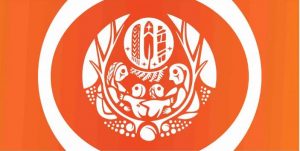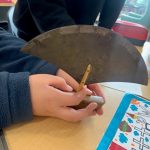 Author, filmmaker, and animator, Jeff Chiba Stearns, visited University Highlands today to talk about his art. We were particularly interested to hear about his newest book, On Being Yukiko, because we have been learning about the internment of Japanese Canadians during World War 2. On Being Yukiko explores Japanese Canadian family history and cultural identity, and how the impacts of displacement and racism echo into the lived experiences of people today. Jeff worked with artist, Lilian Michiko Blakely, to create this story based on her life and experiences growing up as a Japanese Canadian.
Author, filmmaker, and animator, Jeff Chiba Stearns, visited University Highlands today to talk about his art. We were particularly interested to hear about his newest book, On Being Yukiko, because we have been learning about the internment of Japanese Canadians during World War 2. On Being Yukiko explores Japanese Canadian family history and cultural identity, and how the impacts of displacement and racism echo into the lived experiences of people today. Jeff worked with artist, Lilian Michiko Blakely, to create this story based on her life and experiences growing up as a Japanese Canadian.

Jeff’s drawing style is a self-described blend of Japanese and American styles that he calls “hapanimation.” He has a lot of fun with his drawings, creating mixed creatures with fun blended names. His mixed creatures are a metaphor for his own experience with “mixed” or “hapa” identity. He showed us some basic drawing strategies, and ways to alter expressions and moods of a character with slight changes to the design. He even did a hapanimation drawing of one of our students!

Students will have an opportunity to buy some of Jeff’s books with an order form going home today. Jeff personalizes each book with a doodle and a message!




 Earlier in the school year we talked about how examining artifacts (objects created or modified by humans) can tell us about the society in which they were made and about who used them. Today, students had the opportunity to explore a variety of traditional Inuit artifacts, borrowed from the UBC Museum of Anthropology.
Earlier in the school year we talked about how examining artifacts (objects created or modified by humans) can tell us about the society in which they were made and about who used them. Today, students had the opportunity to explore a variety of traditional Inuit artifacts, borrowed from the UBC Museum of Anthropology.



